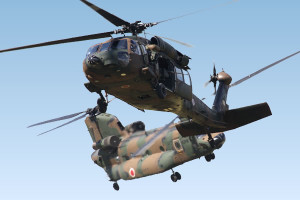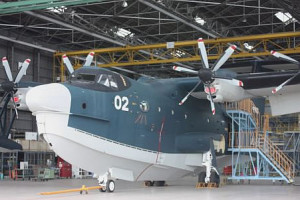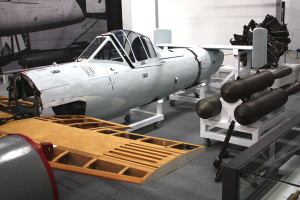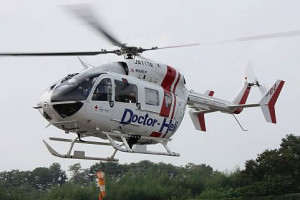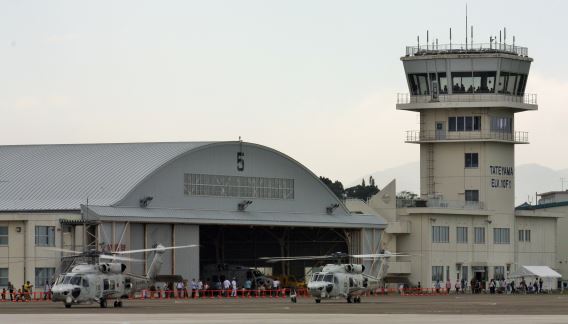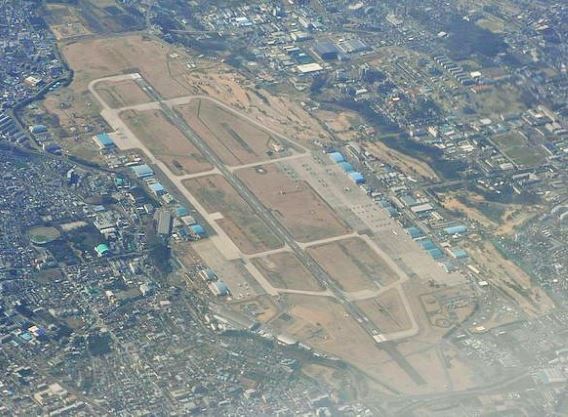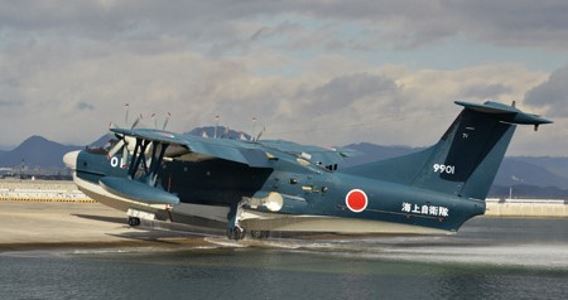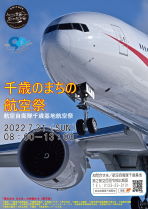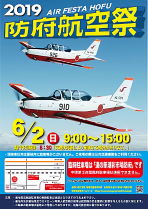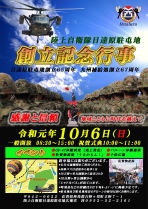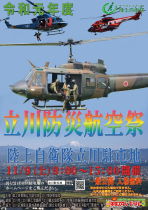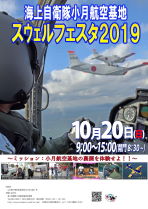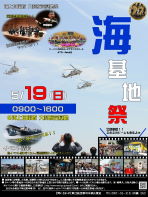JMSDF Base Histories
This page follows the format adopted for the JASDF base histories that are likewise being gradually compiled and expanded.
Steeped in aviation history that in some cases pre-dates the service’s formation, JMSDF air bases are inextricably linked to the development of aviation in Japan. This page will gradually be built up to provide comprehensive information on the key events and operations that have happened in the history of 14 of the service’s major air bases. The bases highlighted in the following table have been included as examples.
| Atsugi | Iwo To (Iwo Jima) | Maizuru | Omura | Tateyama |
| Hachinohe | Kanoya | Naha | Ozuki | Tokushima |
| Iwakuni | Komatsushima | Ohminato | Shimofusa |
Completed as an Imperial Japanese Naval Air Force base in June 1930 and now the JMSDF’s largest helicopter base, Tateyama in Chiba Prefecture (seen below) is targeted for particular attention.
(All photographs on this website are copyright J-HangarSpace
unless otherwise stated.)
As a temporary measure, some basic information is provided below in directory form.
|
Atsugi |
Location | Ayase, Kanagawa Prefecture |
| Established | (IJNAF base completed 1941) (As JMSDF air station) June 1971 |
The setting for U.S. Army Gen. Douglas MacArthur’s famous arrival on vanquished Japanese soil on August 30, 1945, Atsugi’s long career as a U.S. Navy base commenced in December 1950.
 Atsugi as it looked for the air in the 1950s. The base is bordered by four rivers: the Tatekawa
Atsugi as it looked for the air in the 1950s. The base is bordered by four rivers: the Tatekawa
flows to the west; the Hikijigawa, Katasegawa and Izumigawa to the east.
(Photo: Japan Ministry of Defense)
Initially conceived as an IJNAF training airfield for carrier-based aircraft crews—a role Atsugi has coincidentally fulfilled since October 1973 as a shore-base for U.S. Navy carrier fighter squadrons—funding to cover the costs of such a facility was set aside in 1938. Submitted by the Ministry of the Navy on December 23, 1939, a request bearing the name Atsugi was selected over two other candidates, in Izumi, Kagoshima Prefecture, and Kochi City, Kochi Prefecture. At the time, it was envisaged that 58 carrier-borne bombers and 28 reconnaissance aircraft would be stationed at the base. In its later years, the airfield’s proximity to Tokyo naturally dictated that it become heavily involved in the front line of homeland defence operations right up to the end of the war.
The original base was located around six miles (10 km) from what was then the town of Atsugi. A number of theories have been put forward as to why the name was chosen, the most popular being as a ruse to deceive any potential enemies, but there were many cases where a base was given a name different from that of its true location. Whereas the Imperial Japanese Navy had systems in place for the naming of ships and aircraft, a method for naming its bases did not come into effect until September 18, 1943. Prior to that time, the practice was to use names that would be nationally recognized. As the site straddled several villages, there were a number of options. Some of the village names, however, were more closely associated with other parts of Japan; Ayase was possibly thought too close to that of the Japanese battleship Hatsuse, which was sunk by mines during the Russo-Japanese War of 1904–5. Although the name of a bay as well as a local place name, Sagami had unfortunately already been taken for an IJAAF airfield that was then under construction.
Reflecting a shortage of pilots and the deteriorating war situation, the 60-aircraft Atsugi (later 203rd) Naval Air Group was formed at Atsugi under the 11th Air Fleet on April 1, 1943. Emblematic of the base’s combat operations was the composite 302nd Naval Air Group, the 1st Squadron of which at its peak flew more than 40 Mitsubishi J2M (Jack) interceptors. Formed on February 20, 1944, at Kisarazu, Chiba Prefecture, the squadron moved to Atsugi to commence training on March 30, 1944, the day the 203rd formed and relocated to Chitose air base in Hokkaido.
Starting on August 16, 1945, the day after Emperor Hirohito’s pre-recorded radio broadcast had announced Japan’s capitulation, there took place what became known in the Japanese press as the Atsugi Naval Air Group Incident. Refusing to accept the surrender, a total of 83 members of the 302nd Naval Air Group under the command of Capt. Yasuno Kozono (1902–60) staged a revolt, while attempting to exhort local people to support them by dropping leaflets from their aircraft. A telephone appeal made by the Emperor’s brother, Prince Takamatsu (1905–87), did nothing to dissuade a reported 33 of the 302nd’s pilots from taking off on August 19 and heading for IJAAF bases in Saitama Prefecture in an ultimately unsuccessful bid to rally other units to their cause. Having held the base at Atsugi captive for nine days, the remnants finally gave themselves up on August 25.
The first Allied personnel to make landfall at Atsugi was a 148-strong advance party under Col. Charles Tench arrived three days later, two days ahead of MacArthur.
Thus dating back only four years prior to the arrival of occupying U.S. forces, the base’s Japanese service history recommenced after a 26-year hiatus on July 1, 1971, when the part of the base vacated by U.S. elements due to the changing situation in the Vietnam War was transferred to Japan Defense Agency control. (Initially designated as a Naval Air Station, Atsugi’s time downgraded to Naval Air Facility status began on the same day.)
Acting as a sub-base for Shimofusa in Chiba Prefecture, the JMSDF area of the base witnessed the forming of the first Atsugi detachments on December 24, 1971, to officially start in earnest joint U.S.-Japan operations. Atsugi was elevated to full base standard in October 1973 and became the home of the Fleet Air Force Headquarters, also relocated from Shimofusa, two months later.
New dimensions were added to JMSDF operations in 1981. Firstly, a detachment from the Iwakuni-based 71st Kōkūtai was formed at Atsugi to provide search and rescue (SAR) cover with a single ShinMaywa US-1 amphibian that July. Three months later saw the arrival from Shimofusa of the 51st Kōkūtai, the JMSDF’s test and evaluation squadron.
On March 30, 1983, the forming of the JMSDF’s first P-3C squadron, the 6th Kōkūtai, under the 4th Fleet Air Wing started Atsugi’s long association with the Orion. The base is destined to become the first to conduct operational squadron-level P-1 operations in the autumn of 2015.
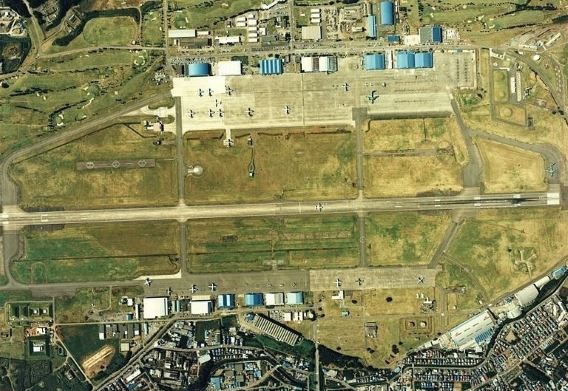
Two aerial photos of Atsugi, taken 20 years apart; (above) as the base appeared in 1988,
(below) from an ANA flight en route to Matsuyama, Ehime Prefecture, in March 2008.
(Photos: [Above] National Land Image Information [Color Aerial Photographs], Ministry of Land,
Infrastructure, Transport and Tourism; [below] Yoshiaki Yamaguchi, both via Wikimedia Commons)
In December 2013, a civil contractor working on a construction site on the U.S. (east) side of the air base stumbled upon an aircraft shelter from Atsugi’s time as an IJNAF base. Inside the bunker was part of the starboard wing leading-edge slat from a Nakajima J1N Gekko (Irving) night fighter, another type operated by the 302nd Naval Air Group. The plan was to place the relic on display at the base terminal building.
| JMSDF Atsugi Air Station | |
| Based units | 4th Fleet Air Wing HQ:
31st Flt/32nd Flt, 3rd Fleet Air Sqn (P-1)
511th Flt (P-1/UP-1, P-3C/UP-3C and 61st Fleet Air Sqn (C-130R, LC-90) |
| Contact points | Mubanchi, Ayase, Kanagawa Prefecture 252-1101, Japan
Tel.: +81 (0)467-78-8611 Base website homepage/2021: (link) |
| Nearest stations | Sagamino* さがみ野 or Sagami-Otsuka 相模大塚 on Sagami Line 相模本線/Sotetsu Railway (*) Not to be confused with nearby Sagamiono station on the Odakyu Line. |
| Japanese Reference Sources | Base website (last accessed Apr. 18, 2015) Base Watching Guide (Ikaros, 1996) Wikipedia 厚木海軍飛行場・厚木航空隊事件 |
|
Hachinohe |
Location | Hachinohe, Aomori Prefecture |
| Established | (As IJAAF base) 1941 (As JMSDF air station) Mar. 16, 1957 |
The first utilization of the airfield at Hachinohe, construction of which had started in 1939, was as a training facility for young Imperial Japanese Army Air Force (IJAAF) pilot recruits.
Having only been completed and commenced operations in 1941, the base area was expanded during its time as U.S. Army Camp Haugen under the postwar Allied Occupation from August 1945. As a result of the redeployment of U.S. forces following the outbreak of the Korean War in 1950, a National Police Reserve camp was established on the site that September, though the resident unit was to be relocated to Kanazawa, Ishikawa Prefecture, in April 1951. Having come under National Safety Force control from October 1952, the facilities became JGSDF Hachinohe Army Camp upon the withdrawal of U.S. units and the base’s return to the Japanese government on May 17, 1956.
It was on March 9, 1957, that offices were set up for 67 staff members in preparation for an adjacent JMSDF presence on the base, which officially started on March 16 with the forming of the Grumman TBM Avenger-equipped Hachinohe Kōkūtai (Air Corps) that reported to the then regional Ohminato Chihōtai (Naval District). Having assumed command of the 2nd Hikōtai (Squadron) in 1958, the Hachinohe Kōkūtai was reorganized as the 2nd Kōkūgun (Fleet Air Wing) under the centralized Kōkūshūdan (Fleet Air Group) on September 1, 1961. The base added the 4th Kōkūtai in 1963.
Having exchanged the Avengers for Lockheed P2V-7 Neptunes in 1958, Hachinohe received its first Kawasaki P-2J Turbo-Neptunes in 1971 and Kawasaki-built Lockheed P-3C Orions in 1985. The base was briefly home to the 51st Kōkūtai, the JMSDF’s aircraft test and evaluation unit, from its formation as a result of the reorganization on September 1, 1961, to its relocation to Shimofusa, Chiba Prefecture, in March 1963.
Commencing in 1963, when the Provisional Hachinohe Detachment was formed, there was also a JASDF presence at the base that was to remain until 1972. For safety reasons, joint civil and U.S. military operations were ceased at Misawa in 1965. This move prompted the transfer of civil operations to Hachinohe until Misawa commercial services resumed in 1975.

(Above) Hachinohe Air Station as it looked from the air 50 years ago, in 1975.
(Photo: National Land Image Information [Color Aerial Photographs], Ministry of Land,
Infrastructure, Transport and Tourism via Wikimedia Commons)
(Below) Hachinohe as it looks today. (Photo: JMSDF Hachinohe Air Station)
On March 23, 1999, a Hachinohe-based aircraft made the first sightings of two suspicious vessels off the northwest coast of the Japanese mainland island of Honshu. The sightings set in motion a chain of events that culminated several hours later in JMSDF and Japan Coast Guard vessels firing warning shots. Referred to in the Japanese press as the Noto Peninsula Incident, this first major maritime security operation had lasting ramifications, having revealed certain shortcomings—particularly in terms of the rules of engagement—that on this occasion had allowed North Korean vessels disguised as Japanese trawlers to make good their escape.
On March 25, 2008, further reorganization of the flying units resulted in the two P-3C units merging into one; both were disbanded, the 2nd Kōkūtai reforming as the surviving entity.
First formed on December 1, 1960, the resident air rescue squadron kept pace with the equipment changes over the years, receiving its first UH-60J rescue helicopter in 1994. As a result of the reorganization of March 2008, however, the base’s UH-60Js were moved to Ohminato.
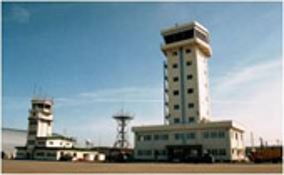 The control tower currently in operation at Hachinohe was completed in 1998.
The control tower currently in operation at Hachinohe was completed in 1998.
(Photo: JMSDF Hachinohe Air Station)
 From the vantage point of the control tower, the view away from the air base reveals the city
From the vantage point of the control tower, the view away from the air base reveals the city
of Hachinohe and, roughly 85 kilometres to the north, the 900-metre peak of Mt. Kamabuse.
(Photo [posted Sept. 2021]: 2nd Fleet Air Wing via Twitter @jmsdf_2aw)
As the northernmost fixed-wing patrol unit, Hachinohe’s 2nd Fleet Air Wing has to conduct safe operations in the harshest winter weather conditions. Its mission responsibilities can broadly be divided into four categories: maritime patrol/surveillance; disaster relief; cooperation with civilian organizations; and overseas deployments. The 2nd’s home-based operational zone extends upwards from the northernmost tip of the Noto Peninsula on the west coast, includes Hokkaido and the northernmost Japanese islands, and extends down the eastern coastline as far as the south of Fukushima Prefecture.
 In 2012, the innovative issue of a set of commemorative stamps was included in the
In 2012, the innovative issue of a set of commemorative stamps was included in the
promotional activities marking Hachinohe Air Station’s 55th anniversary.
Recent achievements have included commencing, on January 23, 2015, the latest series of flights on behalf of the Japan Meteorological Agency that monitor the ice floes primarily in the Sea of Okhotsk. Having reached the 1,000 mark in 2001, the last mission of 2015, carried out on April 3, was the 1,089th of its kind conducted by the JMSDF since 1960.
Early in May 2014, two P-3Cs and a 130-strong support team were sent to Djibouti in East Africa to join an international force engaged in measures to counter the threat to shipping in the area from pirates. The last Hachinohe elements returned to base on June 19 of that year. The 2nd Fleet Air Wing has been involved in four of the 18 deployments since the counter piracy operations commenced in May 2009.
The latest Djibouti deployment was quickly followed by the sending of another pair of aircraft and around 40 support personnel to Australia in August 2014 to take part in a multinational anti-submarine training exercise.
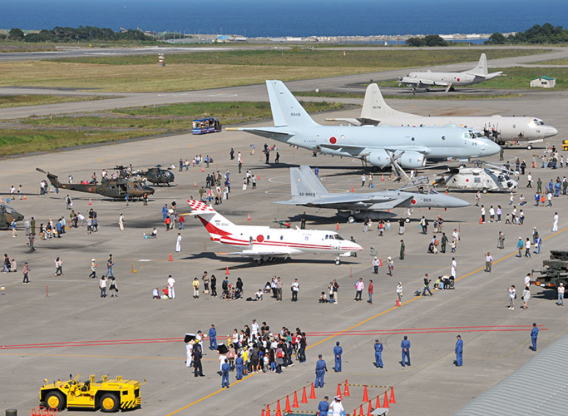 The P-1 present at the Hachinohe airshow in September 2014 provides a sign of
The P-1 present at the Hachinohe airshow in September 2014 provides a sign of
things to come. (Photo: JMSDF Hachinohe Air Station)
On the home front, the annual air show at Hachinohe naturally plays a key role in the base’s annual programme of community relations events. The Kawasaki P-1 made its debut at the September 2014 event, which was blessed with good weather and thus attracted around 7,000 people, roughly double the normal number.
 Early every January, ceremonies at SDF bases mark the commencement of the New Year’s flight
Early every January, ceremonies at SDF bases mark the commencement of the New Year’s flight
operations. In 2015, the event at Hachinohe (shown above*) was followed two weeks later
by the first patrols that monitor the ice floes. (Photo: JMSDF)
* Covering the Hachinohe ceremony on January 6, 2015, a short article on the asahi.com news site mentioned that Rear Admiral Tomohiko Madono, the commander of the 2nd Fleet Air Wing, gave the New Year briefing in front of around 100 unit personnel. The first flight involved three P-3Cs engaging in formation flight training while proceeding along the coast from Hachinohe to Kuji in Iwate Prefecture.
Accompanied by the usual music soundtrack preferred for promo videos, another short film giving a glimpse of daily life at Hachinohe can be found on YouTube here [link].
 Home to the 2nd Fleet Air Wing since its days as the Hachinohe Kōkūtai in 1957, Hachinohe’s 65th
Home to the 2nd Fleet Air Wing since its days as the Hachinohe Kōkūtai in 1957, Hachinohe’s 65th
anniversary in 2022 coincided with that of the service’s 70th anniversary, marked in part with
this collection of photos. (Photos: 2nd Fleet Air Wing JMSDF via Twitter @jmsdf_2aw)
| JMSDF Hachinohe Air Station | |
| Based units | 2nd Fleet Air Wing HQ:
21st Flt/22nd Flt, 2nd Fleet Air Sqn (P-3C) |
| Contact points | JMSDF 2nd Fleet Air Wing Headquarters, Takadate Kawaragi, Hachinohe, Aomori Prefecture 039-1180, Japan Tel.: +81 (0)178-283011 (Extn.: 2331) Base website homepage/2021: (link) |
| Nearest station | Hon-Hachinohe 本八戸 (Hachinohe Line 八戸線)/JR East |
| Japanese Reference Sources | Base website (last accessed April 22, 2015) Base Watching Guide (Ikaros, 1996) Wikipedia 八戸航空基地・第2航空群・能登半島沖不審船事件 |
|
Iwakuni |
Location | Iwakuni, Yamaguchi Prefecture |
| Established | (As IJNAF base) July 1940 (As joint USMC/JASDF base) Oct. 1954 (to Sept. 1963) Reverted to joint USMC/JMSDF base June 1969 (See chart below) |
On May 3, 2015, the first-ever jointly organized Friendship Day airshow event was held at Iwakuni air base, which is shared by both the JMSDF and the U.S. Marine Corps under the latter’s control (as Iwakuni Marine Corps Air Station[ MCAS], the name first adopted on July 20, 1952).
The event fell four months short of the 70th anniversary of the first arrival of Marine Corps units there in September 1945. Its military government responsibilities and the sheer size of its contingent resulted in the United States being most closely associated with the ensuing period of Allied Occupation. From February 21, 1946, until the end of the Occupation in April 1, 1952, however, Iwakuni fell within the area assigned to the British Commonwealth Occupation Force (BCOF), comprising elements from Australia, India and New Zealand as well as Britain. Roughly a quarter of the size of the U.S. presence in Japan, the BCOF controlled the Chugoku region, encompassing the five prefectures from Tottori and Okayama in the east to Yamaguchi in the west, and the four prefectures on the island of Shikoku. Headquartered in Kure, Hiroshima Prefecture, BCOF was primarily involved with demilitarisation and the dismantling of Japan’s military industrial capacity.
It fell to Royal Australian Navy Captain H. J. Buchanan to lead the first Commonwealth military delegation to set foot on Japanese soil and accept the keys to Yokosuka naval base on August 30, 1945. Subsequently somewhat overshadowed by Gen. Douglas MacArthur’s arrival at Atsugi that very same day, this poignant moment was recorded for posterity (See Early SDF History page).
In the case of Iwakuni, it was the Royal Australian Air Force (RAAF) that played a major role in what were known as BCAIR operations; Iwakuni was designated as an RAAF base from March 1948 to 1952.
Snapshots of the Royal Australian Air Force Presence at Iwakuni 1946–54
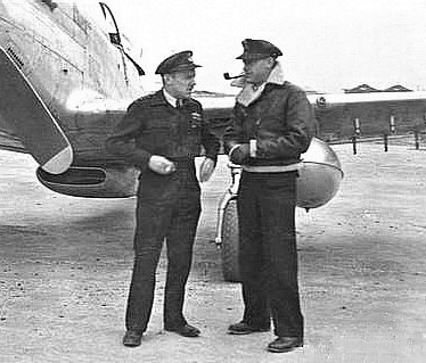 March 9, 1946. Having just led in the first No. 81 Fighter Wing Mustang flight to arrive at Iwakuni,
March 9, 1946. Having just led in the first No. 81 Fighter Wing Mustang flight to arrive at Iwakuni,
commanding officer Wing Commander Glen Cooper (left) is met by his equal-ranking opposite
number from the resident No. 381 Base Squadron, J. R. Kinninmont.
(Photo: Australian War Memorial via Wikimedia Commons)
 An informal portrait of the Williams brothers—Venn (left) and Cliff—flight lieutenants who flew
An informal portrait of the Williams brothers—Venn (left) and Cliff—flight lieutenants who flew
Mustangs with No. 82 (Fighter) Squadron, BCOF.
(Photo [1947]: Australian War Memorial via Wikimedia Commons)
 Iwakuni, circa 1950. Three North American F-51D Mustang fighters from No. 77 Squadron undergo
Iwakuni, circa 1950. Three North American F-51D Mustang fighters from No. 77 Squadron undergo
maintenance. No. 77 Sqn was an original element of the BCOF in Japan and had relocated from
Hofu in 1948. By 1950, it was the only squadron representing the RAAF in Japan and was
preparing to return home when placed on combat standby on June 25. Flying the first
combat mission by a non-U.S. squadron on July 2, 1950, just a week after the
outbreak of the Korean War, No. 77 Sqn moved to a base in Korea on
October 12 that year, returning temporarily to Iwakuni to convert
onto the Gloster Meteor F.8 in early April 1951.
(Photo: National Museum of the U.S. Air Force via Wikimedia Commons)
 Soldiers from British troop units wait to board a Korea-bound Douglas C-47 Dakota aircraft of
Soldiers from British troop units wait to board a Korea-bound Douglas C-47 Dakota aircraft of
No. 30 Transport Squadron. The RAAF retained a transport unit at Iwakuni until 1955.
(Photo: Australian War Memorial via Wikimedia Commons)
 They also served. A group portrait, taken circa April 1953, of the day shift staff at the Transit Hotel at
They also served. A group portrait, taken circa April 1953, of the day shift staff at the Transit Hotel at
No. 91 (Composite) Wing. As its name suggests, the hotel was primarily intended for UN troops
passing through Iwakuni en route to the Korean front, but guests also included businessmen
and show girls. A section of the RAAF’s No. 391 Base Service Squadron, the hotel provided
24-hour accommodation, meal and currency exchange services. Working alongside
British and Australian air force servicemen were 56 Japanese members of staff.
(Photo: Australian War Memorial via Wikimedia Commons)
 August 10, 1953. Group Captain Alan Burnard is on the left of this informal group portrait of
August 10, 1953. Group Captain Alan Burnard is on the left of this informal group portrait of
members of No. 391 (Base) Squadron, standing in front of an air movement status board
at Iwakuni. (Photo: Australian War Memorial via Wikimedia Commons)
 June 23, 1954. RAAF fitters of No. 491 Maintenance Squadron work on the engine of one of
June 23, 1954. RAAF fitters of No. 491 Maintenance Squadron work on the engine of one of
No. 77 Squadron’s Meteor aircraft. (Photo: Australian War Memorial via Wikimedia Commons)
During the Korean War, Short Sunderland Mk.V aircraft from the Royal Air Force (RAF), which had formed a three-squadron Far East Flying Boat Wing (FEFBW) in Singapore in 1950, were stationed on rotational detachment at Iwakuni; the last detachment came to an end on July 31, 1953. The FEFBW was the only RAF unit that participated in missions over Korea.
In his book, Sunderland over Far-Eastern Skies (Pen & Sword, 2010), Group Captain Derek L. Empson provides details of the maritime reconnaissance missions conducted in support of a UN blockade of North Korea. His account also provides and an insight into off-duty life in what was then a small town during his time as a navigator with the then rank of flight lieutenant. Arriving for the first of his five-week tours of duty in late March 1953, the principal operations fell into three categories: air surveillance patrols; shipping surveillance patrols along set tracks over the Yellow Sea that lasted up to 13 hours; and weather data gathering off the Chinese coast. Pre-planned and tasked by the U.S. Navy under the UN mandate, missions were flown daily throughout the war, and also during the Armistice period that followed, until September 1954. (A link to a close-up of No. 209 Sqn Sunderland Mk.5 ‘C’ Charlie, taken off Iwakuni in 1951, is included here [link]).
No. 14 Squadron RNZAF was stationed at Iwakuni from late March 1946 to February 1948. An excellent illustrated account of the FG-1D Corsair-equipped unit’s sea journey to and time in Japan can be found here [link]. Of note is the contrast between the photos of the cannibalized hangars at Iwakuni and the new No. 14 Squadron HQ, paid for by the Japanese government as part of its war reparations.
Iwakuni’s association with flying boats briefly extended to civil operations. Following a route proving flight that departed London on November 24, 1947, the base received British Overseas Airways Corporation (BOAC) Plymouth-class Short Sandringham flying boat services, an extension of the Hong Kong route, from March 1948. These were curtailed in the course of 1949, but other carriers resumed international services in earnest from 1952.
Returning to Iwakuni’s formative years, the construction of the IJNAF airfield was commenced in April 1938, nine months after the start of the Second Sino-Japanese War (1937–45). Prior to the acquisition of the land by the Japanese government, Iwakuni was a river delta area made up of agricultural land and hamlets. A training unit assigned to the Kure Naval Depot having arrived in December 1939, the flight training elements of the Iwakuni Naval Air Group officially took up residence and were declared fully operational on July 8, 1940. At the start of the Pacific War in December 1941, 3,000-strong Iwakuni was a dual-function training and defence base that was home to 96 student pilots and 120 Zero fighters. The base’s scope was expanded by the opening of the 1,000-cadet Iwakuni branch of the Etajima Naval Academy in September 1943.
During 1945, the facilities at Iwakuni were subjected to strafing attacks primarily carried out by U.S. and British aircraft and two B-29 air raids, on May 10 and August 14, the latter being the day before Japan surrendered.
Already developed as a major gateway during the Korean War campaign, Iwakuni’s facilities were extensively renovated prior to the U.S. Air Force (USAF) assuming control from the RAAF on April 1, 1952, under an agreement between the Japanese government and the UN. Having also become home to the U.S. Navy’s Fleet Air Wing 6 on October 1, 1954, Iwakuni witnessed the relocation from South Korea headquarters of the 1st Marine Air Wing (MAW), which took up residence in July 1956. The north side of the airfield was expanded to accommodate the MAW’s total complement of around 2,500 personnel. On January 1, 1958, Iwakuni finally passed from USAF hands and was redesignated a Marine Corps Air Facility, around four and a half years before Marine Corps Air Station (MCAS) status was bestowed.
In terms of overall command from the Japanese side, Iwakuni was initially a joint operation between the JASDF and USAF from March 1957. It was not until June 1969 that the JMSDF took over the reins for the second and final time. The complex ebbs and flows of the SDF presence during the 50s and 60s are best set in chronological order in tabular form, as follows.
| Apr. 1952 | USAF base established |
| July 1953 | USAF base closed to make way for USMC elements formerly based at Itami (Osaka) and in Korea |
| Oct. 1954 | Becomes joint USMC/JMSDF base when JMSDF Iwakuni Air Training Detachment formed (upgraded to air squadron status in Feb. 1958) |
| Sept. 1963 | JMSDF air station closed, centralized training elements disbanded or relocated to Utsunomiya |
| Feb. 1964 | JASDF sub-base established |
| Dec. 1964 | JASDF sub-base upgraded to air base following Nov. 1964 transfer of 8th Sqn from 6th Air Wing to Komatsu to form 82nd Air Group |
| Dec. 1967 | JASDF facility downgraded to sub-base following the disbandment of 82nd Air Group and transfer of 8th Sqn to Komaki the previous month |
| Oct. 1968 | JASDF sub-base closed |
| June 1969 | JMSDF air station established, detachment from 51st Fleet Air Sqn forms, HQ remains at Shimofusa Air Station |
At the base level, joint flight operations commenced in October 1954 and were continued by the formation of a JMSDF Iwakuni Air Training Detachment flying Beech SNB/JRB-4 Expeditors in March 1957, this unit being elevated to Air Training Squadron status on February 1, 1958. Formed in June 1968, an Iwakuni Air Detachment was disbanded in March 1983.
The base’s long association with aircraft made by ShinMaywa (formerly Shin Meiwa) commenced with the formation, on March 1, 1973, of the 31st Fleet Air Squadron on the PS-1 anti-submarine warfare (ASW) flying boat under the 31st Fleet Air Wing.
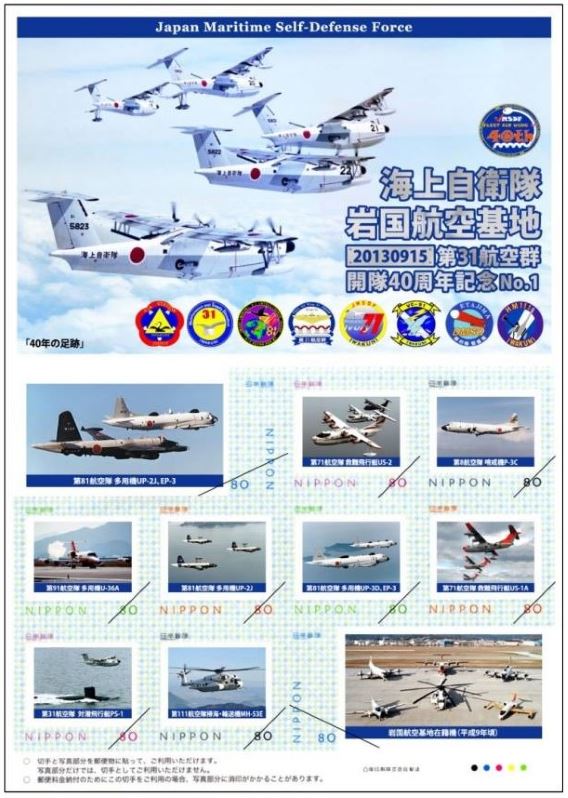 In September 2013, a special issue of stamps went on sale at post offices in Iwakuni and
In September 2013, a special issue of stamps went on sale at post offices in Iwakuni and
surrounding areas to mark the 31st Fleet Air Wing’s 40th anniversary.
 On approach to MCAS Iwakuni (Photo [Oct. 1, 1980]: Tech. Sgt. Michael E. Daniels/USAF via
On approach to MCAS Iwakuni (Photo [Oct. 1, 1980]: Tech. Sgt. Michael E. Daniels/USAF via
U.S. National Archives and Records Administration [NARA])
 A replica Mitsubishi Type 0 Carrier Fighter is parked in front of the shrapnel-scarred Zero Hangar
A replica Mitsubishi Type 0 Carrier Fighter is parked in front of the shrapnel-scarred Zero Hangar
at MCAS Iwakuni in May 1993. Located across the street from the base Provost Marshal’s Office,
the hangar is one of the last vestiges of the base’s original residents.
(Photo: U.S. Marine Corps via Wikimedia Commons)
The major undertaking in a project first announced in 1992, reclamation work designed to reposition Iwakuni’s runway half a mile (one kilometre) offshore was started in 1997. The ultimate aims being to reduce noise levels in the local community and increase safety, landfill material from nearby Mt. Atago was carried three miles (4.8 km) by conveyor to barges. Completed in March 2010, the new runway entered operation two months later.
 An aerial view of Iwakuni runway in 1996, before the start of reclamation and runway
An aerial view of Iwakuni runway in 1996, before the start of reclamation and runway
relocation work. (Photo: U.S. Marine Corps via Wikimedia Commons)
 Two JMSDF aircraft types that have since passed into history, at Iwakuni in September 2002.
Two JMSDF aircraft types that have since passed into history, at Iwakuni in September 2002.
December 13, 2012, saw the official opening of Kintaiko Airport, named after the bridge that is a local landmark, 48 years after the end of a brief three-year period of civil airline services in August 1964. Iwakuni has thus joined the ranks of SDF bases that are co-located with airline operations.
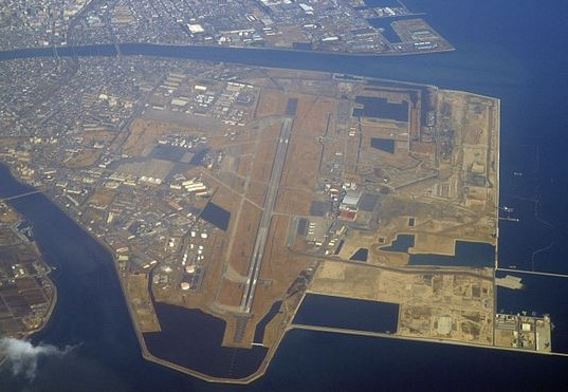
Iwakuni before and after completion of Iwakuni-Kintaikyo Airport. The shot above was taken from
the window of a passing JAL flight in February 2007, that below in January 2013, the month
after the airport’s official opening.
(Photos: [Above] Hideyuki Kamon, [below] 衛兵隊衛士, both via Wikimedia Commons)
Snapshots of New Year First Training Mission Ceremonies
(Iwakuni, January 7, 2015)
 Dwarfed by one of Iwakuni’s cavernous hangars, members of the 31st Fleet Air Wing await the start
Dwarfed by one of Iwakuni’s cavernous hangars, members of the 31st Fleet Air Wing await the start
of the traditional formalities for the first flight training missions of the year on January 7, 2015.
(Photo: U.S. Marine Corps Air Station Iwakuni/Lance Corporal Carlos Cruz Jr.)
 The representative aircraft from each unit assigned to the year’s first flight training mission are
The representative aircraft from each unit assigned to the year’s first flight training mission are
ceremonially taxied past their respective hangars as they set off to the takeoff point.
(Photo: JMSDF Iwakuni Air Station)
Mission accomplished. Having negotiated the slipway at Iwakuni (above), the US-2 crew that took
part in the first flight of 2015 heads back toward the hangars (below).
(Photos: JMSDF Iwakuni Air Station)
******************************
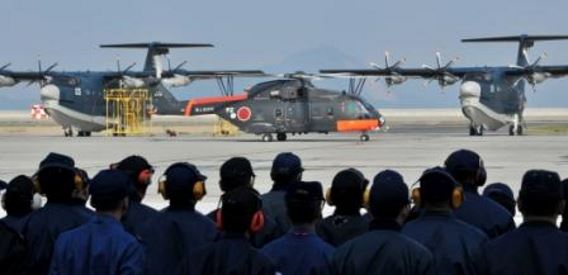 (Photo: JMSDF Iwakuni Air Station)
(Photo: JMSDF Iwakuni Air Station)
Another of the regular events in life at Iwakuni is the return of an Agusta-Westland CH-101 helicopter after an extended period of service aboard the Yokosuka-based Antarctic research icebreaker Shirase. Taken at one such event in April 2013, the two photos shown give some idea of its ceremonial aspect (above) and the rapturous welcome that is extended to the crew members (below).
 (Photo: JMSDF Iwakuni Air Station)
(Photo: JMSDF Iwakuni Air Station)
 The poster used to advertise Iwakuni’s first-ever jointly organized Friendship Day
The poster used to advertise Iwakuni’s first-ever jointly organized Friendship Day
event, held on May 3, 2015.
| JMSDF Iwakuni Air Station | |
| Based units | 31st Fleet Air Wing HQ:
71st Fleet Air Sqn (US-2) 81st Fleet Air Sqn (EP-3, OP-3C, UP-3D, U-36A
111th Fleet Air Sqn (MCH-101) Shore base for CH-101 helicopters from Antarctic survey ship Shirase |
| Contact points | PR Group, 31st Fleet Air Wing Headquarters, 2-chome, Misumimachi, Iwakuni, Yamaguchi Prefecture 740-8555, Japan Tel.: +81 (0)827-22-3181, extn. 6231/6232 Base website homepage/2021: (link) |
| Nearest stations | By bullet train (shinkansen) service
Get off at Shin-Iwakuni 新岩国 on Sanyo Shinkansen (山陽新幹線) At Hiroshima 広島, change to normal JR Sanyo Main Line 山陽本線, By normal train service Get off at Minami-Iwakuni 南岩国 or Iwakuni 岩国 on Sanyo Main |
| Japanese Reference Sources | Base website (last accessed June 7, 2015) Base Watching Guide (Ikaros, 1996) Wikipedia 岩国飛行場 |
|
Iwo To |
Location | (Administered from Tokyo) |
| Established | (Military base complex) 1933 (As JMSDF base) June 26, 1968 |
Belying its size—a land area of a mere eight square miles (21km2)—Iwo To’s importance in terms of aviation was borne out of its geographical location and the presence of ready-made airfields. This fateful combination placed the island firmly in the sights of USAAF 20th Air Force military planners looking for suitable emergency strips ahead of B-29 operations against mainland Japan in 1945.
 (Map: Sagredo via Wikimedia Commons)
(Map: Sagredo via Wikimedia Commons)
The previous year, the Japanese military presence on Iwo To, which had been Japanese territory since 1891, had received significant reinforcement. The total of around 1,000 civilians, who were to be the last to live on the island, were evacuated ahead of the anticipated invasion. It was at around this time that Japanese naval officers fell victim to the vagaries of their own language and mistakenly started referring to the island as Iwo Jima, the other kanji reading, instead of the name by which it was known to its former residents, Iwo To. It was not until June 2007 that this error was officially corrected, to the chagrin of the U.S. veterans who had fought there. (With one exception, this account uses Iwo To in references to the island and its based units.)
In mid-1944, as part of the military buildup, Japan enhanced the two IJNAF airfields (Chishima and Motoyama) and the IJAAF facility (Kita [North] airfield) that had been completed in 1933 and made operational over the following four years (see Note 1).
The first of the Pacific War to be fought on Japanese soil, the ensuing Battle of Iwo Jima— as it will forever be known outside Japan—was to rage over an horrific 36-day period from February to March 1945.
Motoyama No. 1’s three intersecting runways were used by Japanese fighter and reconnaissance units right up until February 19, the day of the invasion. A week later, the airfield was being made ready for use by U.S. Marine Corps observation aircraft, despite the ongoing threat from Japanese forces. Renamed Central Field on March 1, it was here that the first flak-damaged B-29 landed, on March 4, 1945.
The first of two parallel runways at Central Field was declared operational on March 16, 1945. Both were progressively extended to accommodate B-29 operations, while the Japanese-built airstrip running east to west served as a refuelling stop.
 Tasked with providing a fighter escort on B-29 raids against Japan, North American P-51D
Tasked with providing a fighter escort on B-29 raids against Japan, North American P-51D
Mustangs of the USAAF’s 21st Fighter Group are parked at Iwo Jima’s North Field in 1945.
The distinctive landmark at the island’s southern tip, the volcanic peak of Mount
Suribachi—Japanese for a mortar (as in grinding bowl)—can be seen in the
background. (Photo: United States Army Air Forces via Wikimedia Commons)
Some idea of the extent of the facilities built by the U.S. forces can be seen in this different view,
which seems to have been taken at the same time [link]
Home primarily to 20th Air Force fighter, night fighter and reconnaissance units up to December 1945, Central Field became a refuelling stop for Military Air Transport Service (MATS) and support units four months after the cessation of hostilities. Handed back to Japanese administration on June 27, 1968, part of what was once Central Field now forms JMSDF Iwo To Air Station.
 Central and North airfields, as they appeared after the war in 1945.
Central and North airfields, as they appeared after the war in 1945.
(Photo: United States Army Air Forces via Wikimedia Commons)
Abandoned after the war, Kita airfield (see Note 2) was for a time used as a storage facility.
(Note 1) Confusingly, or perhaps a deliberate attempt at deception on the part of the Japanese military, Chishima was also the name of the administrative province that covered part of the Kuril islands off Hokkaido in northern Japan; the province’s four southernmost islands remain the subject of a territorial dispute with Russia. Despite its name, there was also a Kita (North) airfield located near the village of Yomitan in the southernmost prefecture of Okinawa. Located close to Kadena AB, traces of Kita (Yomitan) airfield remain to this day [link]. Finally, the kanji for Motoyama can also be read Genzan, the Japanese name for Wonsan (today in North Korea), from where the Zero-equipped Genzan Naval Air Group operated.
(Note 2) Again confusingly, some sources refer to Kita airfield as Motoyama No. 3.
SDF Operations from Iwo To
 (Photo: Japan Ministry of Defense)
(Photo: Japan Ministry of Defense)
The JMSDF base was established on Iwo To after its return to Japanese administration in 1968, and the 4th Fleet Air Wing then based at Shimofusa in Chiba Prefecture charged with forming the Iwo To Air Station Detachment. In March 1982, the service added the Iwo To Air Rescue Flight. Making use of the geothermal power available on (or rather under) their doorsteps, JMSDF facilities today cover around 43% of Iwo To’s land area.
 The flag of Japan is raised as that of the United States is lowered on the occasion of the base’s
The flag of Japan is raised as that of the United States is lowered on the occasion of the base’s
return in 1968. (Photo: JMSDF 21st Fleet Air Wing via Twitter @JMSDF_21aw)
 Iwo Jima, 1978
Iwo Jima, 1978
(Photo: National Land Image Information [Color Aerial Photographs], Ministry of Land,
Infrastructure, Transport and Tourism via Wikimedia Commons
 (Photo [posted Aug. 2021]: JMSDF 21st Fleet Air Wing via Twitter @JMSDF_21aw)
(Photo [posted Aug. 2021]: JMSDF 21st Fleet Air Wing via Twitter @JMSDF_21aw)
Having also established an air base on the island in January 1984, the JASDF formed the Provisional Drone Operation Unit under the Iwo To Base Squadron in March 1992. The squadron was re-designated as a detachment the following month, in April 1992, the provisional unit being officially renamed the Iwo To Drone Operation Flight in March 1994.
The aircraft most closely associated with the JASDF operation on Iwo To were the 12 F-104J Starfighters converted to UF-104JA (and two to interim UF-104J) target drones. The last Starfighters in JASDF service, the first was shot down in March 1995, the last two years later.
Ordered for modification by Mitsubishi in 1988 and designed to be flyable by a pilot or remotely, the first two QF-104Js were completed late in 1989. The first of the two aircraft flew from Nagoya/Komaki AB late on December 18 that year. After delivery, these aircraft were tested over the course of 147 sorties by the Air Development & Test Wing (ADTW) at Gifu up until 1992. The milestone of the first remotely controlled landing in full drone configuration was achieved during operational service trials conducted in October 1991.
 One of the two UF-104Js in flight over Iwo To (Photo: Japan Ministry of Defense)
One of the two UF-104Js in flight over Iwo To (Photo: Japan Ministry of Defense)
When funding was secured for six aircraft, the designation was changed from QF-104J to UF-104J and the production drones, as opposed to the test aircraft, designated UF-104JA. The two test aircraft were handed over to the Provisional Drone Operation Unit in March 1992, and the unit received all six ’JAs of the first batch during the course of fiscal 1993. An order for a further batch of six aircraft followed late in 1994.
Two excellent videos on YouTube show the two UF-104Js during testing. The first covers a manned test flight [link], the second a remote flight from a ground station with a manned chase aircraft [link].
Staying on the subject of pilotless aircraft, Iwo To was also used during recovery tests of the air-launched Improved TACOM UAV. The first autonomous landing on the base’s single main runway, which is 8,700 feet (2,650 metres) long and 200 feet (60 metres) wide, took place on December 15, 2009. (See the JASDF Aircraft Programmes page). Of equal length, the 100-foot (30 metre) wide parallel taxiway can serve as a runway in an emergency.
On a visit to Washington D.C. in January 1983, the then Japanese Prime Minister Yasuhiro Nakasone (1918–2019) famously pledged to assist U.S. defence policy by making Japan an “unsinkable aircraft carrier in the Pacific”, a term that had originally been applied to the island of Saipan during the Pacific War. Since 1989, the tiny expanse of Iwo To has essentially served as a rock-solid aircraft carrier by hosting regular field carrier landing practice (FCLP) exercises for U. S. Navy fighter units shore-based at Atsugi, Kanagawa Prefecture. Since the first night landing practice (NLP) was held in 1991, more than 95% of such training has also been conducted on Iwo To, where the runway features a mockup of a carrier deck expressly for the purpose.
Such occasions are one of the few times that Iwo To Air Station opens its doors to civilians. Aside from civilian contractors or veterans returning to pay their respects at memorials to those who fell in 1945, the base remains off limits to unauthorized personnel. In June 2013, the Kanagawa Prefecture politician Hideshi Suzuki was among a group of former Internal Affairs Standing Committee members and people from the Atsugi base area whom the U.S. Navy flew down to Iwo To in order to witness an FCLP exercise. Although the people living in the vicinity of Atsugi had not been subjected to the noise generated by NLP since May 2007, operational delays had resulted in an increased amount of daytime training in May 2012.
The account on Hideshi Suzuki’s Japanese website [link] includes some photos of the Iwo To Air Station and war memorials.
A “temporary” solution since its inception, the U.S. Navy’s utilization of Iwo To has removed around 150 hours of excessive noise pollution from around Atsugi, from where the fighter units are due to relocate to Iwakuni in 2017. In 2014, the Japanese government accelerated efforts to conduct an environmental survey of an alternative island location, Mageshima, off the south coast of Kyushu and administered by Kagoshima Prefecture. From the U.S. Navy standpoint, that would bring an end to the major downsides of flying from Iwo To, namely the unpredictable tropical weather conditions and the lack of a nearby diversionary airfield.
 Iwo To tower, May 2010
Iwo To tower, May 2010
(Photo: Revmqo via Wikimedia Commons)
 In 2022, the Iwo To base hangar will have been protecting aircraft and personnel from the
In 2022, the Iwo To base hangar will have been protecting aircraft and personnel from the
vagaries of the Ogasawara weather for nearly 40 years.
(Photo [posted Aug. 2021]: JMSDF 21st Fleet Air Wing via Twitter @JMSDF_21aw)
In November 2014, a Delta Airlines Boeing 757 diverted to Iwo To after an engine shutdown when en route from Kansai Airport to Guam. The respective SDF elements are also well positioned to coordinate and provide rescue services throughout the Ogasawara island chain, from the airlift of patients requiring urgent medical attention to, should the need ever arise, the supply of disaster relief.
 (Above) In keeping with SDF tradition, the Iwo To detachment displays the squadron emblem of
(Above) In keeping with SDF tradition, the Iwo To detachment displays the squadron emblem of
its parent 21st Fleet Air Squadron outside the unit’s admin block.
(Below) The Iwo To base squadron office building (Photos: JMSDF 21st Fleet Air Wing via Twitter @JMSDF_21aw)
(Photos: JMSDF 21st Fleet Air Wing via Twitter @JMSDF_21aw)
 (Photo [posted Aug. 2021]: JMSDF 21st Fleet Air Wing via Twitter @JMSDF_21aw)
(Photo [posted Aug. 2021]: JMSDF 21st Fleet Air Wing via Twitter @JMSDF_21aw)
 Changing of the guard on Iwo To, July 2024. Two of the newly SAR-optimized SH-60Ks arrive to
Changing of the guard on Iwo To, July 2024. Two of the newly SAR-optimized SH-60Ks arrive to
commence taking over duties from the last of the JMSDF’s UH-60Js. The sign bears the kanji for
strong-willed and immediate response. It is believed that UH-60J 8979, which was the last built,
will remain in service there until early 2025 while the unit works up on its new equipment.
(Photo: 21st FAW/JMSDF via X @JMSDF_21aw)
| JMSDF Iwo To Air Station | |
| Based units | Iwo To SAR Detachment, 21st Fleet Air Sqn (UH-60J)
Under command of 21st Fleet Air Wing at Tateyama |
| Japanese Reference Sources | (Website, accessed via that of 4th FAW/Atsugi, has been removed) Base Watching Guide (Ikaros, 1996) Wikipedia 硫黄島航空基地 |
|
Kanoya |
Location | Kanoya, Kagoshima Prefecture |
| Established | (As IJNAF base) April 1, 1936 (As JMSDF base) July 1954 |
The opening of the newly completed base at Kanoya, which was to be utilized throughout the Pacific War, coincided with the formation of its first resident unit, the Kanoya Naval Air Group, on April 1, 1936.
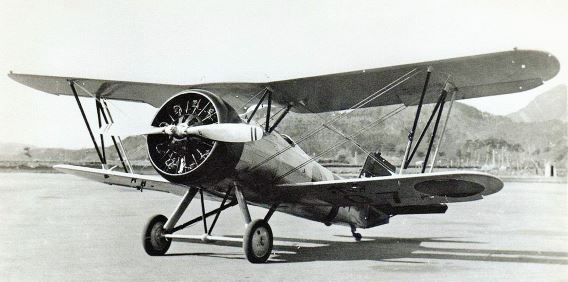 A Nakajima Type 95 Carrier-based Fighter from the carrier Ryūjō. seen at Kanoya soon after the
A Nakajima Type 95 Carrier-based Fighter from the carrier Ryūjō. seen at Kanoya soon after the
base’s inauguration. The high ground in the background is Gonohara Hill, part of the
Mt. Takakuma range to the north of the base. Today, a memorial tower dedicated
to the base’s fallen “special attack” pilots stands at the foot of the hill.
(Photo via Wikimedia Commons)
On August 12, 1937, just over a month after what is termed the Marco Polo Bridge Incident had sparked the Second Sino-Japanese War (1937–1945), the Kanoya Naval Air Group was deployed to Taiwan and subsequently saw extensive combat service on the Chinese mainland until 1941.
As such, the first unit to bear the Kanoya Naval Air Group name only remained active until about a year into the Pacific War. Initially, the unit operated land-based bombers and carrier-based fighters in the training role. However, half the land-based bomber complement was deployed to French-Indochina immediately before the outbreak of hostilities and took part in the operation against the Royal Navy battelships, HMS Prince of Wales and HMS Repulse, off the coast of what was then Malaya on December 10, 1941.
The Kanoya Naval Air Group was re-designated as the bomber-equipped 751st Naval Air Group on October 1, 1942, and soon thereafter deployed to Kavieng airfield on New Ireland (now a province of Papua New Guinea). Having suffered heavy losses in the Solomon Islands theatre of operations and during the Battle of the Philippine Sea of June 19–20, 1944, the unit was finally disbanded as the 701st Naval Air Group in July 1944 in the Mariana Islands.
In the meantime, a second version of the Kanoya Naval Air Group, tasked with the training of carrier-borne attack aircraft and bomber crews, became the base’s main tenant on October 1, 1942. Having switched to the training of land-based attack aircraft crews in February 1944, the unit was to remain at Kanoya until the deteriorating war situation and the presence of front-line units forced a relocation to Toyohashi in Aichi Prefecture; what was actually the second Toyohashi Naval Air Group formed on July 10, 1944. Providing training for aircraft armourers who by that stage of the war were being recruited in their teens, a unit called the Second Kanoya Naval Air Group was operational from February 1, 1944, to June 30, 1945.
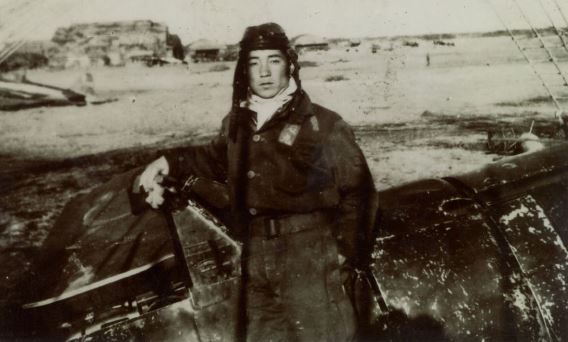 One of the 828 young airmen to depart from Kanoya during its time as a kamikaze attack base,
One of the 828 young airmen to depart from Kanoya during its time as a kamikaze attack base,
former professional baseball player Shinichi Ishimaru (1922–1945) pauses to have his photo
taken next to the cockpit of a Zero fighter; his flying suit bears his family name. Originally
exempt from military service as a professional baseball player, as an evening law school
student he signed up for Navy flight school in a recruitment drive in the spring of 1944.
Assigned to Tsukuba Naval Air Group as a student pilot, Ishimaru reportedly
volunteered to join a kamikaze unit and was sent to Kanoya for training.
Ishimaru’s aircraft was shot down by U.S. fighters when en route to
Okinawa on May 11, 1945.
(Photo via Wikimedia Commons*)
Kanoya was built up as the primary and largest base for the mounting of “special attack” (kamikaze) missions under the command of the Fifth Air Fleet Headquarters. Equipped with Mitsubishi G4M Betty bombers and Kugisho MXY7 Ohka (Cherry Blossom) special attack aircraft, the first detachment from the 711th Naval Air Group moved forward from Konoike air base in Ibaraki Prefecture to Kanoya on January 20, 1945.
The Kanoya history on the Japan Ministry of Defense website states that, from February 1945, a total of 828 young men from 70 units flew in 445 aircraft on suicide missions from Kanoya. The base was thus itself the target of B-29 air raids on March 18 and 19, 1945, and subjected to frequent air attack in the closing stages of the Pacific War. According to Nihon Kūshū no Zenbō (The Complete Picture of the Air Raids on Japan) by Masao Hiratsuka, (Yosensha, 2015), the city of Kanoya suffered 268 air attacks, 15 of which were targeted against the air base, by more than 2,000 aircraft. Dedicated to the 1945 timeline of the carrier USS Bennington (CV-20), a website includes photos taken by Lt. Roy M. Huffington (1917–2008), who served aboard the Bennington’s Essex-class sister ship, the USS Hornet (CV-12). Two photos depict what is described as East Kanoya airfield under attack on March 18, 1945 [link1] [link2]
Following the end of hostilities, Kanoya was occupied by U.S. forces in September 1945, the IJNAF’s Fifth Air Fleet making way for the USAAF’s Fifth Air Force. The U.S. forces pulled out in November 1948, at which time the base came under the temporary control of Japan’s Finance Ministry.
The base became home to a National Police Reserve garrison in December 1950, four months after that organization’s establishment, and then to the 12th Regiment of the now National Safety Force (NSF)’s Kanoya garrison in 1952. The latter was disbanded in December 1953, when an aviation element of the Coastal Safety Force, initially equipped with T-34A Mentor training aircraft, took up residence and was to prove the harbinger of Kanoya’s return to a full-fledged air base under the JMSDF. Aside from the base nomenclature, the organizational changes brought about by the JMSDF’s inception on July 1, 1954, resulted in the Coastal Safety Force Kanoya Air Corps being renamed the JMSDF Kanoya Kōkūtai (Air Corps). A short-lived JGSDF garrison was dispersed to other facilities within Kagoshima Prefecture in November 1955.
Kanoya was progressively developed as the training centre for the JMSDF’s fixed-wing operations. Formed in November 1954, the 1st, 2nd and 3rd Hikōtai (flights) of the Kanoya Air Corps were joined by the 4th and 5th in January 1955. The expansion led first to the formation of the 2nd Kanoya Air Corps in December 1955 and then its relocation to Ohminato a year later, in December 1956. The standing up of the 6th Hikōtai and the disbandment of both the 3rd and 4th in May and July 1957, respectively, were followed in April 1958 by the formation of the Kanoya Air Training Corps, at which time the 6th was redesignated as the 21st Hikōtai and transferred to Tokushima. The Kanoya Base Rescue Flight was formed in December 1960.
On September 1, 1961, a major reorganization led to the traditional practice of naming principal units after their respective bases being abandoned in favour of numbered Kōkūgun (Fleet Air Wings), in Kanoya’s case the First Fleet Air Wing that survives to this day. Having formed on the Lockheed P2V-7 Neptune in 1956 as the 1st Hikōtai, the resident 1st Fleet Air Squadron received its first Kawasaki P-2J Turbo-Neptune in February 1971 and has operated the P-3C Orion since July 1989. (Details of flying units will be provided on the JMSDF Squadron Histories page that is in preparation.)
 Kanoya JMSDF Aviation Museum, January 2010 (Photo: Sanjo via Wikimedia Commons)
Kanoya JMSDF Aviation Museum, January 2010 (Photo: Sanjo via Wikimedia Commons)
Kanoya will be familiar to many as the location, albeit not very easily accessible, of the excellent JMSDF Aviation Museum. Alongside the JMSDF exhibits, the museum serves as the repository for poignant portraits of some of the, by its count, 908 airmen who set off on kamikaze missions from the base.
A pre-1945 view of the Kanoya Naval Air Group headquarters (above) and the same building as
the 1st Fleet Air Wing HQ in around 2010 (below).
(Photos: [above] via Wikimedia Commons, [below] Sanjo via Wikimedia Commons)
In June 2015, however, heavy equipment was brought in to demolish the historically significant former Kanoya Naval Air Group headquarters. In the 70th anniversary year of the end of the Pacific War, the very building where a conference was held in February 1941 and the plans hatched for the earth-shattering Pearl Harbour attack is being torn down, reportedly [link] because the structure no longer complies with earthquake resistance standards. Having amazingly survived the onslaught unleashed against Kanoya base in 1945 and been used as the HQ of the 1st Fleet Air Wing since September 1961, the 79-year-old building will finally be razed to the ground. Photographed at the annual Air Memorial in Kanoya air show in April 2015, its replacement [below] does show some resemblance to its predecessor.
 The new 1st Fleet Air Wing HQ building was declared operational in June 2015.
The new 1st Fleet Air Wing HQ building was declared operational in June 2015.
(Photo: Sanjo via Wikimedia Commons)
It will be from this building that plans for Kanoya’s modern-day commitment to security will be formulated. These plans will include the base’s occasional but ongoing involvement in anti-piracy deployments off the coast of Somalia and over the Gulf of Aden.
 A small section of the large number of base personnel who lined the apron at Kanoya on June 9,
A small section of the large number of base personnel who lined the apron at Kanoya on June 9,
2014. They were bidding farewell to the two P-3C Orions that were departing on a four-month
anti-piracy deployment to Djibouti in East Africa. (Photo: Japan Ministry of Defense)
In 2014, the 16th such deployment was the fourth to involve Kanoya-based aircraft. Two P-3Cs departed from Kanoya on June 9, conducted shipping surveillance operations in very demanding climatic conditions and returned on October 17. Of the total of 190 personnel in the contingent, the JMSDF accounted for around 120, and the remaining 70 were from the JGSDF.
Although the base maintains its own low-key but poignant memorial, somewhat more imposing is a memorial tower dedicated to those who gave their lives on one-way missions from Kanoya. A Japanese website offers some images of the memorial, which is located in in Kozuka Park in the Imasaka area of the city.
Mentioned in the caption for the Type 95 trainer at the start of this section, the memorial was erected to worship the spirits of the fallen in the Imasaka area of Kanoya on March 20, 1958. (The memorial is now located in Kozuka Park, close to Nishiharadai Elementary School.) Placed atop the 36-feet (11-metre) high memorial sits the international peace symbol of a white dove, wings outstretched, facing towards the southern sea skies. The tower’s nameplate bears the names and kamikaze unit names as well as the mission dates and numbers of the 908 killed in action. Granted city status in May 1941, Kanoya holds a memorial service in April every year, for which the First Fleet Air Wing provides the honour guard and music as well as a P-3C flypast; hence the air show event being named the Air Memorial in Kanoya.
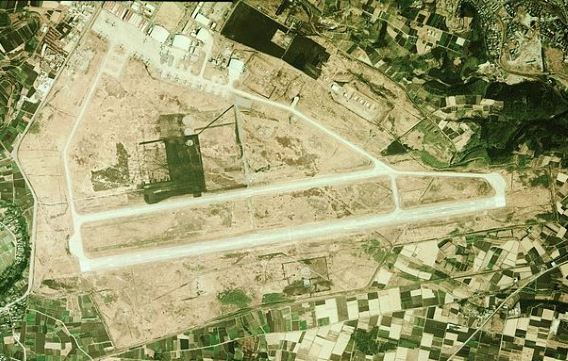 Kanoya, 1974 (Photo: National Land Image Information [Color Aerial Photographs],
Kanoya, 1974 (Photo: National Land Image Information [Color Aerial Photographs],
Ministry of Land, Infrastructure, Transport and Tourism via Wikimedia Commons)
 Kanoya, 2010 (Photo: Sanjo via Wikimedia Commons)
Kanoya, 2010 (Photo: Sanjo via Wikimedia Commons)
* Purporting to show Shinichi Ishimaru in 1945, a suspiciously modern-looking photo on Wikimedia Commons [link] appears to be of the actor Toshihide Tonesaku, who played Ishimaru in the 1996 film Ningen no Tsubasa (Wings of a Man). The film was based on the 1994 novel Kieta Haru (Vanished Spring) by Hidehiko Ushijima (1935–1999).
| JMSDF Kanoya Air Station | |
| Based units | 1st Fleet Air Wing HQ:
11th Flt/12th Flt, 1st Fleet Air Sqn (P-3C, P-1) 211th Naval Air Training Sqn (TH-135)
Kanoya SAR Detachment, 22nd Fleet Air Sqn (UH-60J) (Under command of 22nd Fleet Air Wing, Omura) |
| Contact points | (Base)
PR Group, 1st Fleet Air Wing Headquarters, 3-11-2 Nishihara, Kanoya, Tel.: +81 (0)994-43-3111, extn. 2235 Base website homepage/2021: (link) (JMSDF Museum) (Address as above) Tel.: +81 (0)994-42-0233 Website homepage/2021: (link) |
| Nearest station | Ferry and bus ride away from Kagoshima-Chuo 鹿児島中央 Station (Nippo Main Line 日豊本線)/JR Kyushu |
| Japanese Reference Sources | Base website (last accessed June 18, 2015) Base Watching Guide (Ikaros, 1996) Wikipedia 鹿屋航空基地・鹿屋海軍航空隊 |
|
Komatsushima |
Location | Komatsushima, Tokushima Prefecture |
| Established | November 1964 |
 Komatsushima, 1976 (Photo: National Land Image Information [Color Aerial Photographs],
Komatsushima, 1976 (Photo: National Land Image Information [Color Aerial Photographs],
Ministry of Land, Infrastructure, Transport and Tourism via Wikimedia Commons)
 The main gate at Komatsushima Air Station, December 2010 (Photo: mti via Wikimedia Commons)
The main gate at Komatsushima Air Station, December 2010 (Photo: mti via Wikimedia Commons)
 View from the Komatsushima control tower on open day, July 2017
View from the Komatsushima control tower on open day, July 2017
(Photo: Hiro via Twitter @hirorin88JMSDF)
 Poster advertising the 2019 Komatsushima open base event
Poster advertising the 2019 Komatsushima open base event
| JMSDF Komatsushima Air Station | |
| Based units | 241st Flt (SH-60J), 24th Fleet Air Sqn
(Both under command of 22nd Fleet Air Wing, Omura) |
| Contact points | JMSDF 24th Fleet Air Sqn, 4-3, Subata-aza, Shimamachi, Wada-cho, Komatsushima, Tokushima Prefecture 773-0025, Japan Tel.: +81 (0)885-37-2111 24th FAS website homepage/2021: (link) |
| Nearest station | Awa-Akaishi 阿波赤石 Station (Mugi Line 牟岐線)/JR Shikoku |
| Japanese Reference Sources | 24th FAS website (last accessed [date]) Base Watching Guide (Ikaros, 1996) Wikipedia 小松島航空基地 |
|
Maizuru |
Location | Maizuru, Kyoto Prefecture |
| Established | March 21, 2001 |
 An aerial view of what was to become JMSDF Maizuru air station during its construction.
An aerial view of what was to become JMSDF Maizuru air station during its construction.
(Photo [undated]: Japan Ministry of Defense via Wikimedia Commons)
 A Shinto ceremony is held as part of the Maizuru base inauguration ceremonies, March 24, 2001.
A Shinto ceremony is held as part of the Maizuru base inauguration ceremonies, March 24, 2001.
(Photo [posted Mar. 24, 2021]: JMSDF/21st Air Wing via Twitter @JMSDF_21aw)
In serious need of editing, a video of the Maizuru Autumn Festival air show of September 2023 can be found here (link).
| JMSDF Maizuru Air Station | |
| Based units | 231st Flt (SH-60K), 23rd Fleet Air Sqn (Both under the command of 21st Fleet Air Wing, Tateyama) |
| Contact points | PR Group, JMSDF Maizuru District Headquarters, 1190 Amarubeshimo, Maizuru, Kyoto Prefecture 625-8510, Japan Tel.: +81 (0)773-62-2250 extn. 2208 Maizuru Naval District website homepage/2021: (link) |
| Nearest station | Higashi-Maizuru 東舞鶴 (Obama Line 小浜線)/JR West |
| Japanese Reference Sources | Base Watching Guide (Ikaros, 1996)
Wikipedia 舞鶴基地 |
|
Naha |
Location | Naha, Okinawa Prefecture |
| Established | July 1972 |
 Naha, May 2010 (Photo: Sonata via Wikimedia Commons)
Naha, May 2010 (Photo: Sonata via Wikimedia Commons)
 (Photos: 5th Fleet Air Wing JMSDF via Twitter @jmsdf_5aw)
(Photos: 5th Fleet Air Wing JMSDF via Twitter @jmsdf_5aw)
To mark the 70th anniversary of the JMSDF in 2022, the 5th Fleet Air Wing at Naha posted a group of photos (above) on Twitter. They show (clockwise from top left) the entrance to 5th FAW’s main building in today’s COVID times; as it was in July 1972, at the time the provisional Okinawa detachment was formed; P-2Js, the type that served there from May 1972 to January 1991; and P-3Cs, from July 1990 to the present.
| JMSDF Naha Air Station | |
| Based units | 5th Fleet Air Wing HQ:
51st Flt/52nd Flt, 5th Fleet Air Sqn (P-3C) |
| Contact points | PR Group, JMSDF 5th Fleet Air Wing, 252 Toma, Naha, Okinawa Prefecture 901-0193, Japan Tel.: +81 (0)98-857-1191 extn. 5230 Fax: +81 (0)98-857-1191 extn. 5239 E-mail: 5aw-ckouhou@inet.msdf.mod.go.jp 5th FAW/Naha website homepage/2021: (link) |
| Nearest station | (Transport links from Naha airport) |
| Japanese Reference Sources | 5th FAW website (last accessed [date]) Base Watching Guide (Ikaros, 1996) Wikipedia 那覇空港 |
|
Ohminato |
Location | Mutsu, Aomori Prefecture |
| Established | May 1956 |
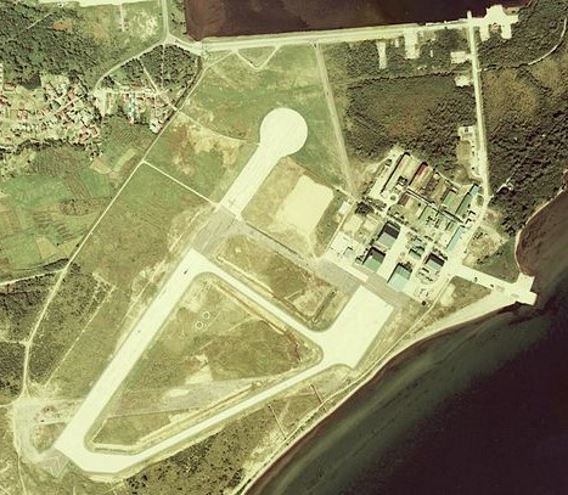 Ohminato, 1975 (Photo: National Land Image Information [Color Aerial Photographs],
Ohminato, 1975 (Photo: National Land Image Information [Color Aerial Photographs],
Ministry of Land, Infrastructure, Transport and Tourism via Wikimedia Commons)
 The Ohminato gate guards HSS-2B 8167 (painted as “8162”) and SH-60J 8249
The Ohminato gate guards HSS-2B 8167 (painted as “8162”) and SH-60J 8249
(“8255”) are forced to endure extreme winter temperatures.
(Photo [posted Feb. 2022]: JMSDF 21st Fleet Air Wing via Twitter @JMSDF_21aw)
| JMSDF Ohminato Air Station | |
| Based unit | 251st Flt (SH-60J), 25th Fleet Air Sqn (Under the command of 21st Fleet Air Wing, Tateyama) |
| Contact points | (District HQ)
PR Group, General Affairs Section, Administration Division, Tel.: +81 (0)175-24-1111 extn. 2304 Tel/Fax: +81 (0)175-24-1640 E-mail: orh-kouhou@inet.msdf.mod.go.jp Ohminato Naval District website homepage/2021: (link) (Air Base) 2, Hayasaki, Jogasawa, Mutsu, Aomori Prefecture 035-0095 Tel.: (as above); no dedicated website |
| Nearest station | Ohminato 大湊 (Aoimori Line 青い森線)/Aoimori Railway [jmap] |
| Japanese Reference Sources | Base Watching Guide (Ikaros, 1996)
Wikipedia 大湊基地 |
|
Omura |
Location | Omura, Nagasaki Prefecture |
| Established | December 1956 |
Following his visit in October 1958, an Aireview magazine reporter waxed lyrical about the picturesque location of Omura air base, which at that time of year was a frenzy of autumn flowers, in an article published in the December issue.
The town of the same name was then better known and often making news headlines for its detention facility, where Koreans who were awaiting deportation after having committed crimes in Japan were being held in tit-for-tat response to the detention in Korea of Japanese fishermen caught up in a long-running fishing dispute.
 Two Omura Kōkūtai JRF-5s rest their wings on the apron in front of a hangar at Omura in 1958.
Two Omura Kōkūtai JRF-5s rest their wings on the apron in front of a hangar at Omura in 1958.
On fine days, the grass area immediately behind the aircraft was used for pre-flight briefings.
(Photo published in Dec. 1958 issue of Aireview, used by kind permission of SequireySha K.K.)
Since the facilities that dated back to the former Imperial Japanese Navy Air Corps era were being utilized by the JGSDF, the then JMSDF sites occupied about 20 hectares (50 acres) directly to the south. Land owned by the Maritime Safety Agency (today known in English as the Japan Coast Guard) was sandwiched between the JMSDF sites, which made things very complicated. To the east was land owned by the Civil Aviation Bureau, which included an airstrip about 1,200 metres long. The resident Omura Air Corps aircraft used the same wartime slipway, proceeded along a sea-lane taxiway that was about 2,000 metres long and departed from and landed back within a 3,000-square metre designated landing area located in the middle of Omura Bay.
 An Omura Kōkūtai JRF-5 sets off toward the takeoff point on Omura Bay at the time of a visit by an
An Omura Kōkūtai JRF-5 sets off toward the takeoff point on Omura Bay at the time of a visit by an
Aireview reporter late in 1958. At the time there were just six old aircraft (two PBY-6As and four
JRF-5s) and around 400 personnel at the base, a far cry from its wartime status.
(Photo published in Dec. 1958 issue of Aireview, used by kind permission of SequireySha K.K.)
The sight of a light-coloured JRF and dark blue PBY making their own waves as they took off and landed on the perfectly clear Omura Bay, and of them shedding water as they climbed up the slipway, was truly timeless and of a beauty that made the Aireview reporter lose all track of time.
 October 1958. A view of the ramp at Omura, which at that time was under the command
October 1958. A view of the ramp at Omura, which at that time was under the command
of Capt. Misawa (below), who had graduated from the 62nd Class at the Imperial
Japanese Navy Academy in Etajima, Hiroshima Prefecture, in November 1934.
 (Photos published in Dec. 1958 issue of Aireview, used by kind permission of SequireySha K.K.)
(Photos published in Dec. 1958 issue of Aireview, used by kind permission of SequireySha K.K.)
 Omura, 1975 (Photo: National Land Image Information [Color Aerial Photographs],
Omura, 1975 (Photo: National Land Image Information [Color Aerial Photographs],
Ministry of Land, Infrastructure, Transport and Tourism via Wikimedia Commons)
 Two somewhat more recent aerial views of Omura AB
Two somewhat more recent aerial views of Omura AB
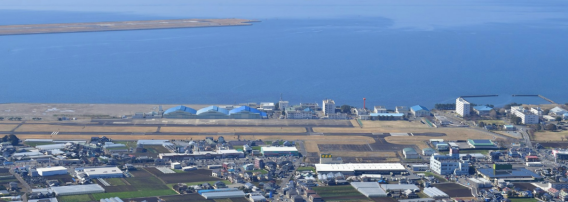 (Photos [posted Feb. 2020]: Katuyuki Matumoto [Katsuyuki Matsumoto] via
(Photos [posted Feb. 2020]: Katuyuki Matumoto [Katsuyuki Matsumoto] via
JMSDF Omura AB Fan Club Facebook page [link])
 (Above and below) The Omura Base Squadron firefighters have a history of using retired helicopters
(Above and below) The Omura Base Squadron firefighters have a history of using retired helicopters
for their practice drills. That above, on an HSS-1, has given way to more environment-friendly
training using recycled SH-60J fuselages, in this case possibly 8204.
 (Photos: [top, undated] JMSDF Omura; [above, undated] JMSDF 22nd Fleet Air Wing via
(Photos: [top, undated] JMSDF Omura; [above, undated] JMSDF 22nd Fleet Air Wing via
Twitter @JMSDF_22aw)
 Base personnel spell out OMURA AB on the occasion of the airfield’s
Base personnel spell out OMURA AB on the occasion of the airfield’s
60th anniversary in 2016. (Photo: 22nd Fleet Air Wing/JMSDF)
 (Photos: 22nd Fleet Air Wing JMSDF via Twitter @jmsdf_22aw)
(Photos: 22nd Fleet Air Wing JMSDF via Twitter @jmsdf_22aw)
To mark the 70th anniversary of the JMSDF in 2022, Omura produced a photo montage (above) of the aircraft types that had been operated from the base and their periods of service.
Top row (left to right): UF-XS Mar. 20, 1963 to Dec. 9, 1964; UF-2 Apr. 29, 1961 to Mar. 31, 1976; PBY June 1, 1956 to Nov. 16, 1960; JRF Dec. 16, 1955 to Nov. 30, 1961
Middle row: UH-60J Mar. 26, 2008 to Feb. 14, 2022; SH-60J since May 28, 1992; SH-60K since July 18, 2007
Bottom row: HSS-2A April 1, 1975 to Jan. 7, 1989 / HSS-2B Mar. 27, 1981 to Nov. 30, 2001; B-65 Feb. 27, 1981 to Mar. 31, 1992; HSS-1N Mar. 1, 1971 to Mar. 25, 1975; SNB Feb. 2, 1959 to Nov. 1962
 In January 2023, Omura AB found itself having to deal with the rare experience of operations
In January 2023, Omura AB found itself having to deal with the rare experience of operations
in snow conditions. (Photo: JMSDF 22nd Fleet Air Wing via Twitter @JMSDF_22aw)
| JMSDF Omura Air Station | |
| Based units | 22nd Fleet Air Wing HQ:
221st Flt (SH-60K)/222nd Flt (SH-60K)/223rd Flt (SH-60J), |
| Contact points | PR Group, JMSDF 22nd Fleet Air Wing
Imazumachi 10, Omura, Nagasaki Prefecture 856-8585 Tel.: +81 (0)957-52-3131, extns. 241/242 E-mail: 22aw-241@inet.msdf.mod.go.jp Base website (on 22nd FAW website)/2021: (link) |
| Nearest station | Takematsu 竹松 (Omura Line 大村線)/JR Kyushu |
| Japanese Reference Sources | Base website (last accessed [date]) Base Watching Guide (Ikaros, 1996) Wikipedia 大村航空基地 |
|
Ozuki |
Location | Shimonoseki, Yamaguchi Prefecture |
| Established | (JMSDF) July 1964 |
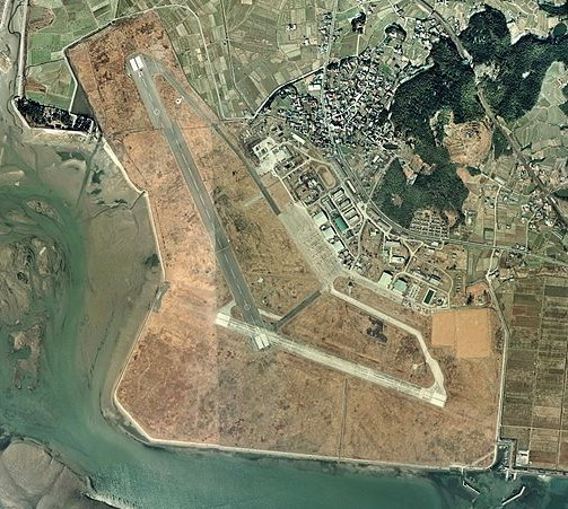 Ozuki, 1975 (Photo: National Land Image Information [Color Aerial Photographs],
Ozuki, 1975 (Photo: National Land Image Information [Color Aerial Photographs],
Ministry of Land, Infrastructure, Transport and Tourism via Wikimedia Commons)
 This enticing view looking across Ozuki AB was being used for recruitment purposes late in 2021.
This enticing view looking across Ozuki AB was being used for recruitment purposes late in 2021.
(Photo: JMSDF Public Affairs Office via Twitter @JMSDF_PAO)
| JMSDF Ozuki Air Station | |
| Based units | Ozuki Air Training Group (ATG) Ozuki Naval Air Training Wing HQ: 201st Naval Air Training Sqn (T-5) |
| Contact points | PR Group, JMSDF Ozuki Naval Air Training Wing, 3-2-1, Matsuya-honmachi, Shimonoseki, Yamaguchi Prefecture 750-1124, Japan Tel.: +81 (0)83-282-1180, extn. 205 Ozuki ATG website homepage/2021: (link) |
| Nearest stations | Ozuki 小月 or Habu 垣生 (Tokuyama-Moji 徳山・門司 service on Sanyo Main Line 山陽線) |
| Japanese Reference Sources | Ozuki ATG website (last accessed [date]) Base Watching Guide (Ikaros, 1996) Wikipedia 小月航空基地 |
|
Shimofusa |
Location | Kashiwa, Chiba Prefecture |
| Established | October 1959 |
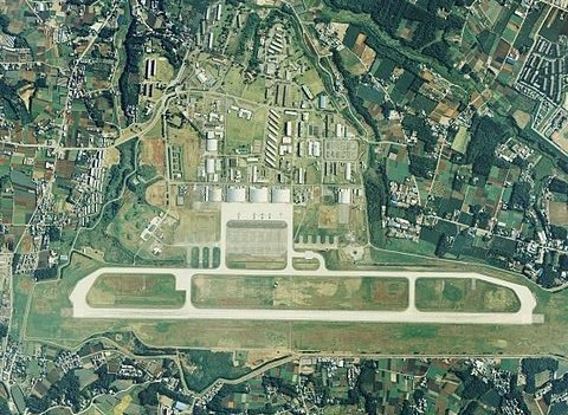 These shots allow a bird’s eye view of the changes made to Shimofusa over the course of 20 years.
These shots allow a bird’s eye view of the changes made to Shimofusa over the course of 20 years.
Both looking east, the photo above was taken in 1989, that below in August 2009. (Photos: [Top] National Land Image Information [Color Aerial Photographs], Ministry of Land,
(Photos: [Top] National Land Image Information [Color Aerial Photographs], Ministry of Land,
Infrastructure, Transport and Tourism; [above] DAJF, both via Wikimedia Commons)
 Thanks to its serial number, one of the resident P-3Cs could be used to publicize Shimofusa’s
Thanks to its serial number, one of the resident P-3Cs could be used to publicize Shimofusa’s
54th anniversary at the base’s 2013 air show. Variations on the marking were applied
to the noses of 5055 at the following year’s event (link) and even to 5029,
which attended the 29th Hyakuri air show in 2013 (link).
(Photo: Akira Watanabe, from his JMSDF P-3C walkaround page [link])
| JMSDF Shimofusa Air Station | |
| Based units | Shimofusa Naval Air Training Wing HQ:
203rd Naval Air Training Sqn (P-3C)
3rd Technical School |
| Contact points | JMSDF Air Training Command Headquarters, 1614-1 Fujigaya, Kashiwa, Chiba Prefecture 277-8661, Japan Tel.: +81 (0)4-7191-2321 Base website homepage/2021: (link) |
| Nearest stations | Shin-Kamagaya 新鎌ヶ谷 Station on the Tobu Noda 東武野田, Hokuso 北総 and Shin-Keisei 新京成 lines |
| Japanese Reference Sources | Base website (last accessed [date]) Base Watching Guide (Ikaros, 1996) Wikipedia 下総航空基地 |
|
Tateyama |
Location | Tateyama, Chiba Prefecture |
| Established | July 1954 |
(Above and below) Tateyama as it looked on December 2, 1954, when a ceremony was held to
mark the official handover of 22 aircraft, including 10 Grumman TBM-3W2 Avengers destined
to be based at Kanoya in Kagoshima Prefecture. These photos are taken from the April 1955
issue of The World’s Aircraft, a magazine that ceased publication after six years in 1957;
another photo from that day appears on the SDF Chronology page.
(Photos used with permission of Hobun Shorin Co., Ltd.)
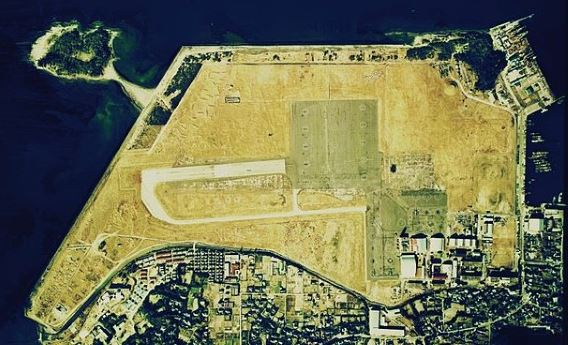 Tateyama, 1974 (Photo: National Land Image Information [Color Aerial Photographs],
Tateyama, 1974 (Photo: National Land Image Information [Color Aerial Photographs],
Ministry of Land, Infrastructure, Transport and Tourism via Wikimedia Commons)
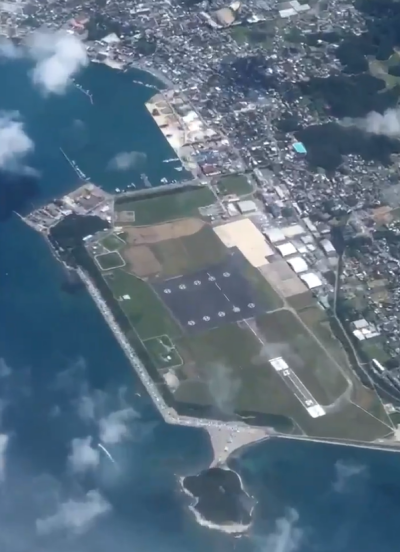 (From short video [link], posted August 2019:
(From short video [link], posted August 2019:
乾物屋TMAmbassador&DIA via Twitter @KanbutsuyaSan)
 Embedded in a taxiway, Tateyama’s salt-removal spray equipment traditionally features at the base’s
Embedded in a taxiway, Tateyama’s salt-removal spray equipment traditionally features at the base’s
helicopter festival event, which usually takes place every summer.
(Image from short video [link], posted July 2019: OTCHIN via Twitter@OTCHIN1)
 Itself formed at Tateyama in September 1961, the 21st Fleet Air Wing produced this
Itself formed at Tateyama in September 1961, the 21st Fleet Air Wing produced this
photo montage to mark the 70th anniversary of the JMSDF in 2022.
(Photos: 21st Fleet Air Wing JMSDF via Twitter @jmsdf_21aw)
 Tateyama Helicopter Festival, July 30, 2023
Tateyama Helicopter Festival, July 30, 2023
(Photo: 21st Fleet Air Wing JMSDF via Twitter @JMSDF_21aw)
| JMSDF Tateyama Air Station | |
| Based units | 21st Fleet Air Wing HQ:
211th Flt (SH-60K)/212th Flt (SH-60J/K)/213th Flt (SAR, UH-60J), 21st Fleet Air Sqn |
| Contact points | PR Office, JMSDF 21st Fleet Air Wing Headquarters, Tateyama Air Base, Mubanchi, Miyagi, Tateyama, Chiba Prefecture 294-8501 Japan Tel.: +81 (0)470-22-3191 extn. 208 E-mail: 21aw-ckouhou@inet.msdf.mod.go.jp 21st FAW/Tateyama website homepage/2021: (link) |
| Nearest station | Tateyama 館山 (Uchibo Line 内房線)/JR East |
| Japanese Reference Sources | 21st FAW website (last accessed [date]) Base Watching Guide (Ikaros, 1996) Wikipedia 館山航空基地 |
|
Tokushima |
Location | Matsushige, Tokushima Prefecture |
| Established | March 1958 |
 The Imperial Japanese Naval Air Force formed a naval air group for the training of
The Imperial Japanese Naval Air Force formed a naval air group for the training of
reconnaissance crews at Tokushima in 1942. (Photo: JMSDF Tokushima Air Base)
 Tokushima AB Then and Now 1. (Above) Some of the Tokushima Naval Air Group’s Kyushu K11W
Tokushima AB Then and Now 1. (Above) Some of the Tokushima Naval Air Group’s Kyushu K11W
Shiragiku (White Chrysanthemum) training aircraft formed the Kikusui (Floating
Chrysanthemum) Air Corps, a special attack (kamikaze) unit, in 1945.
(Below) View across the JMSDF 202nd Air Training Squadron ramp, May 2016
 (Photos: [Top] via Wikimedia Commons; [Above] JMSDF Tokushima Air Base)
(Photos: [Top] via Wikimedia Commons; [Above] JMSDF Tokushima Air Base)
![]() (Above and below) A comparatively fleeting presence, the Tokushima Kōkūtai was formed on the
(Above and below) A comparatively fleeting presence, the Tokushima Kōkūtai was formed on the
Tracker in 1958 and re-designated the 3rd Fleet Air Wing on September 1, 1961,
only to disband in March 1963.
![]() (Photos: JMSDF Tokushima Air Base)
(Photos: JMSDF Tokushima Air Base)
![]() (Photo: JMSDF Tokushima Air Base)
(Photo: JMSDF Tokushima Air Base)
 Tokushima airport, 1974 (Photo: National Land Image Information [Color Aerial Photographs],
Tokushima airport, 1974 (Photo: National Land Image Information [Color Aerial Photographs],
Ministry of Land, Infrastructure, Transport and Tourism via Wikimedia Commons
 Tokushima AB Then and Now 2. (Above) Bearing the tail code トク (toku) for Tokushima, a Kyushu
Tokushima AB Then and Now 2. (Above) Bearing the tail code トク (toku) for Tokushima, a Kyushu
K11W in the circuit at its home base. (Below) Bearing the tail code 202,
a 202nd ATS TC-90 comes in to land, March 2018.
 (Photos: [Top, date unknown] via Wikimedia Commons; [Above] JMSDF Tokushima Air Base)
(Photos: [Top, date unknown] via Wikimedia Commons; [Above] JMSDF Tokushima Air Base)
 (Photo: JMSDF Tokushima Air Base)
(Photo: JMSDF Tokushima Air Base)
In December 2022, the Tokushima Air Training Group posted a two-minute slide show review of the year at the base on its Twitter account (link). Events shown include the first training flight of the year (Jan.), cadet graduation ceremony (Mar.), base air show and trainees’ first unit assignments (Oct.) and the November ceremony to commemorate those who have lost their lives on active service.
| JMSDF Tokushima Air Station | |
| Based units | 241st Flt (SH-60J), 24th Fleet Air Sqn
(Under command of 22nd Fleet Air Wing, Omura)
Tokushima Air Training Group (ATG) 202nd Naval Air Training Sqn (TC-90) |
| Contact points | PR Group, JMSDF Tokushima Naval Air Training Wing Headquarters, 38 Sumiyoshikaitaku, Sumiyoshi, Matsushige, Itano District, Tokushima Prefecture 771-0292, Japan Tel.: +81 (0)88-699-5111 extns. 3233/3234 E-mail: tsatg-ckouhou@inet.msdf.go.jp Tokushima ATG website homepage/2021: (link) |
| Nearest station | Tokushima 徳島 (Kotoku Line 高徳線)/JR Shikoku |
| Japanese Reference Sources | Tokushima ATG website (last accessed [date]) Base Watching Guide (Ikaros, 1996) Wikipedia 徳島飛行場 |


